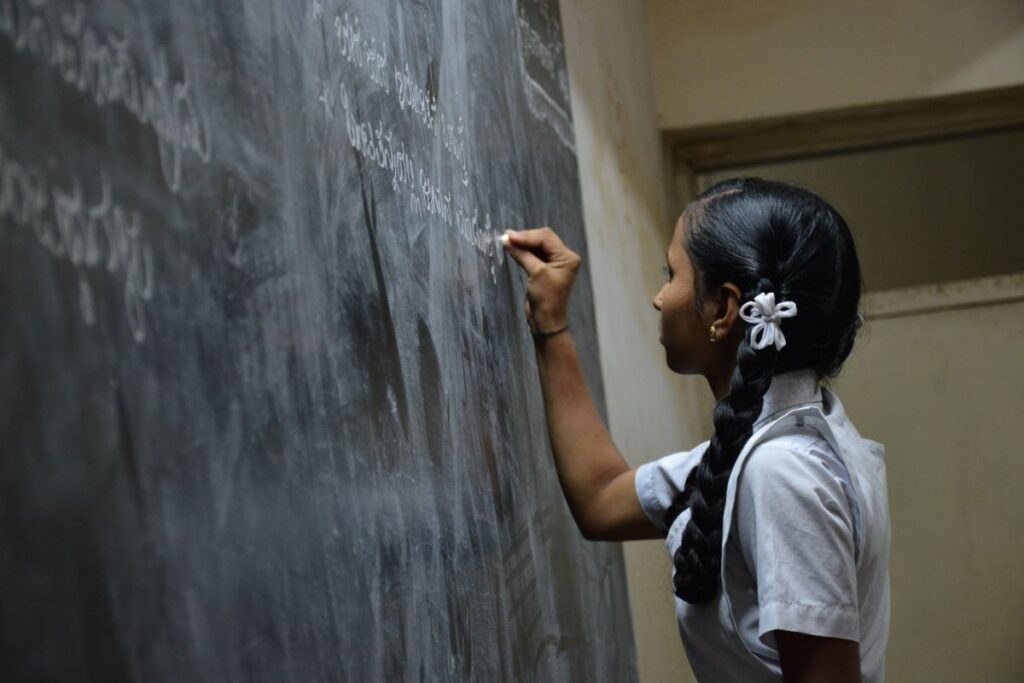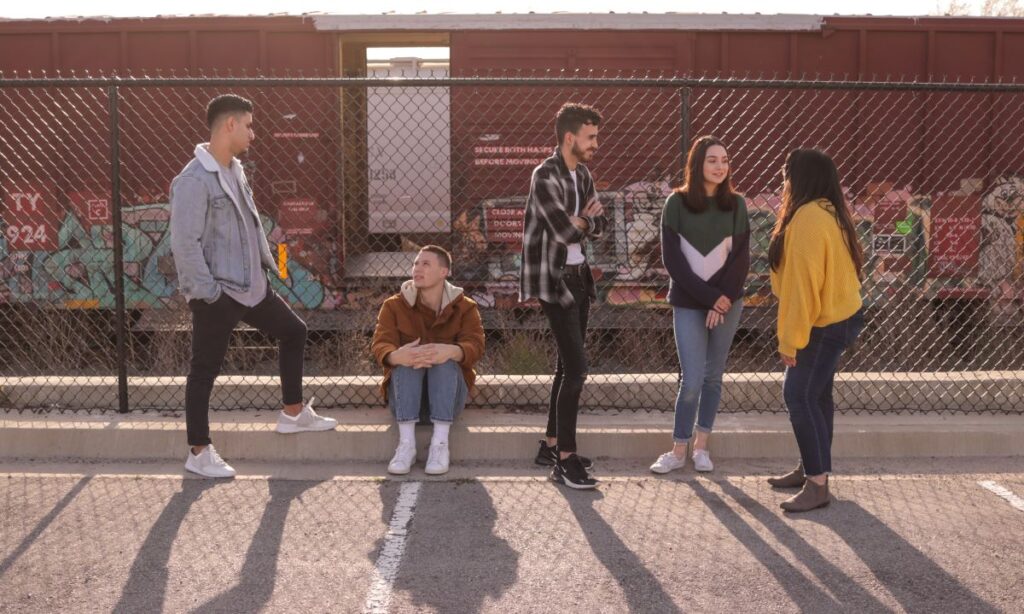
“Nothing about us, without us” is the mantra that is slowly becoming embedded into our psyche as researchers. In other words, our research should be carried out “with” or “by” people with lived experience, and not on, to or about them – otherwise known as patient and public involvement (PPI) (INVOLVE, 2008). I would say it’s about time! However, we are not there yet. Despite the increasing acceptance of working together with people with lived experience on research over the last 20 years across academia, funders, and journal editors, it is unknown if this is translating into practice.
Young People’s Advisory Groups (YPAGs) are arguably the most common way that young people can inform research and particularly in the early research stages (e.g. design). YPAGS can be either project or non-project specific. For example, I personally have worked with members of the McPin Foundation Young People’s Network on my (Dewa et al. 2019, 2021a, 2021b) projects. The McPin network involves young people who have experience of mental health difficulties that are set up as “non-project specific”, whereas other groups advertise and select young people to inform a specific project. Importantly, YPAG involvement can differ regardless of the set up.
The authors (Sellars et al, 2020) of a scoping review published last year introduce their work by saying:
Clearly there is increasing discussion about involving YPAGs but the implementation of YPAGs in health research has not yet been collated. For the first time the authors seek to identify studies that are youth-focused health-related studies and are informed by YPAGs (aged 12-18 years).

There is currently limited evidence of the implementation and impact of Young People’s Advisory Groups (YPAGs) in health research.
Methods
Searching for papers
The authors conducted a scoping review on empirical studies that focused on any aspects of health where at least half of the participants (50%) were aged 12-18 years and would potentially benefit from Young People’s Advisory Group (YPAG) involvement. A study was deemed likely to benefit from YPAG involvement if the research addressed applied health research. The search covered one year (1st January to 31st December 2019) and the MEDLINE database. Authors also hand searched 20 top ranking health journals (e.g. Child Health) and contacted three “experts” to identify any other studies potentially missed by the original search.
Deciding which papers are included
Papers were included if they matched the inclusion criteria:
- Empirical study
- At least half of study participants were aged between 12-18 years old
- Review Author decision that the study could potentially benefit from a YPAG (e.g. addressed adolescent applied research)
- No language restrictions.
The authors then highlighted studies where a YPAG (aged 12-18) was used at any stage of the research process. Authors of these included studies were contacted and asked to fill out a brief survey to collate specific detail about the YPAG involvement. They were asked about level and impact of involvement in the study.
The authors reported that they followed PRISMA-Scoping guidance. However, there was no obvious mention of the study charting process, specifically who did the screening or charting; data items and how the authors went about synthesis. Critical appraisal of included studies was not completed.
Patient and public involvement
The authors selected 27 young people across two independent groups from the pre-existing NeuroOX YPAG. They held two virtual meetings with the groups separately to inform the design and dissemination research stages. The authors reported on recommendations for reporting YPAG involvement in health-related studies. At a high level this included: i) who was involved, ii) frequency of contribution, iii) methods and nature of involvement, iv) parental involvement and recognition of involvement.
Results
Summary of included studies
Of the 1,563 papers found, 690 full-text papers were screened. The main reason papers were excluded was because participants were outside the 12–18 year age bracket and not empirical research (e.g. reviews). The remaining either did not use one or had YPAG members over 18 years old.
Twenty-seven studies were included in the review. Of these, 21 included YPAGs which equated to only 1% of eligible studies (from MEDLINE and hand searching). Co-production was the most common YPAG involvement of the studies that reported YPAG activity (71%).
Most studies were from high-income countries whereas health-topic varied – from sexual health to cyberbullying to diabetes. Notably, most studies reported YPAG involvement in the design stage whereas only two studies reported involvement in the conducting research stage. In the 15 studies that responded to the survey, frequency of meetings and number of young people varied.
Perceived impact of YPAG involvement
Overall, the survey responses indicated a positive impact from working with a YPAG on the research. Examples included helping to shape an intervention, ensuring research was accessible to young people and the research not being possible without youth voices. Additionally, the scoping review YPAG (NeuroOX) reported a positive impact on the research including the ability to identify and prioritise research questions reflecting the needs and interests of young people.

This scoping review of Young People’s Advisory Groups (YPAGs) found that less than 1% of studies that had the potential to include a YPAG actually did so.
Conclusions
Twenty years later, there is still a very small number of empirical studies that report YPAG involvement, particularly in low- and middle-income countries despite the positive impact they seem to make to research studies. However, the limited number of papers reporting details of a YPAG involvement does not necessarily mean it’s not been conducted. Funder and journal encouragement to report patient and public involvement in youth health research is a step in the right direction but there is possibly still some hesitation in working with YPAGs. The reasons for this need to be explored particularly in low- and middle- income countries.

Twenty years later, there is still a very small number of empirical studies that report YPAG involvement, particularly in low- and middle-income countries.
Strengths and limitations
This review was a pleasure to read. It is one of very few papers that collates evidence on use and impact of patient and public involvement in research. It was great to see that the authors had also added to the evidence base of patient and public involvement in scoping reviews. They provided reflections of the process which was great to see. However, the authors could have also provided reflections from the young people involved in the scoping review as this would be useful learning for other young people wanting to get involved in similar studies, and for researchers to know how to accommodate YPAGs better in systematic reviews.
It would also have been nice to extend the YPAG involvement to at least the dissemination stages where the YPAG could have informed the paper itself and been co-authors on the paper. More information about how the scoping review YPAG and included studies YPAGs were formed, key learning, reimbursement, and how it shaped the dissemination strategy would have also been useful to inform future studies and implementation.
As the authors state, the search was limited to just one year, one database and 12-18 age group. Therefore, the authors may have missed numerous studies. I was surprised; there are many study teams that have worked together with young adults (e.g. aged 16-25) and as such there is a possibility of lost learning that could be applicable to the younger age group studies when excluding these studies. It would have also been useful to include more information about the topic focus as there is often disparity between studies focused on mental health compared to other general physical health. For example, the authors could have added detail on study setting, diagnosis, stage of treatment pathway or level of risk.
Learning is perhaps bespoke to different lived experiences.
- Authors could also have presented the top 5 recommendations for working with a YPAG on studies, albeit to encourage more YPAG engagement in future health studies
- Authors could have used the GRIPP tool (Staniszewska et al. 2017) to report PPI within their own scoping review
- Authors mention studies were largely co-production but hard to determine whether they were co-produced, or whether it was more meaningful involvement. This is because a co-produced study focuses on all research stages and not just one or two (e.g. design).

The authors could have also provided reflections from the young people involved in the scoping review as this would be useful learning for other young people wanting to get involved in similar studies.
Implications for practice
Recommendations
- Pay young people for the time they spend in training and giving input
- We need to invest in Young People’s Advisory Groups (YPAGs) across all research stages
- We need creative ways of involving young people, such as media tools that enable a more diverse group of young people
- We need to consistently report on methods of involvement across all publications
Final personal thoughts
It surprises me that researchers are still hesitant to involve people with lived experience in research. Not only is it ethically and morally right to work together with the people who the study is about, but the research is significantly improved by coproducing it with patients and the public. We need more reviews that showcase the impact of youth involvement on findings to convince those sceptics who still think working together on projects is a bad idea. Young people clearly know a lot about their own physical and mental health conditions. The mantra is a good one – “Nothing about us, without us” 😁

Not only is it ethically and morally right to work together with the people who the study is about, but the research is significantly improved by coproducing it with patients and the public.
Statement of interests
None.
Links
Primary paper
Sellars E, Gabriela P, Michelson D, Creswell C, Fazel M (2020). Young people’s advisory groups in health research: scoping review and mapping of practices. BMJ, Arch Dis Child;106:698–704.
Other references
Dewa LH, Crandell C, Choong E, Jaques J, Bottle R, Kilkenny C, Lawrence-Jones A, Di Simplicio M, Nicholls D, Aylin P. CCopeY: a mixed-methods co-produced study on the mental health status and coping strategies of young people during COVID-19 UK lockdown. Journal of Adolescent Health 2021;68:666-67
Dewa LH, Lavelle M, Pickles K, Kalorkoti C, Jaques J, et al. (2019) Young adults’ perceptions of using wearables, social media and other technologies to detect worsening mental health: A qualitative study. PLOS ONE 14(9): e0222655. https://doi.org/10.1371/journal.pone.0222655
Dewa, LH, Lawrence-Jones, A, Kalorkoti, C, et al. Reflections, impact and recommendations of a co-produced qualitative study with young people who have experience of mental health difficulties. Health Expect. 2021; 24: 134– 146.
Staniszewska S, Brett J, Simera I, Seers K, MockfordC, Goodlad S et al. GRIPP2 reporting checklists: tools to improve reporting of patient and public involvement in research. BMJ 2017; 358 :j3453 doi:10.1136/bmj.j3453
Photo credits
- Photo by Jeswin Thomas on Unsplash
- Photo by Leon on Unsplash
- Photo by Barefoot Communications on Unsplash
- Photo by Nikhita S on Unsplash
- Photo by Eliott Reyna on Unsplash
- Photo by Nathan Dumlao on Unsplash
